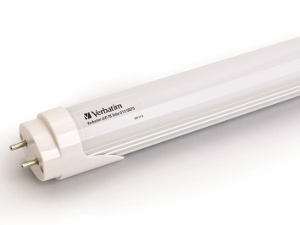

<p><img class=" alignright size-full wp-image-769" src="http://schoolnewsnz.fastrackdev.com/wp-content/uploads/2014/04/SND02-2-PROP-LIGHTING_300x225.jpg" alt="SND02-2-PROP-LIGHTING 300x225" style="margin: 5px; float: right;" width="300" height="225" />You certainly hear and read a lot about the advantages and benefits of energy efficient LED light emitting diodes vs traditional lighting.</p>
<p> <!--more--> </p>
<p>When you compare them to other energy saving lighting methods you will find that LED lighting is by far the most power saving and smart solution. LED is also the most eco-friendly way of illumination which is basically digital light also known as SSL &#8211; Solid State lighting.</p>
<p>At the moment production volumes are small but growing rapidly. This means that pricing for LED is quickly coming down and right now is an excellent solution for commercial users.</p>
<p>It is easy to retro fit LED bulb alternatives for most commonly used light bulbs such as Classic A bulbs used in table lamps, MR16 halogens used in overhead lighting and florescent tubes used in offices.</p>
<p><strong>Here are the main advantages</strong>:</p>
<p><strong>1. Long life</strong><br />Long life stands out as the number one benefit of LED lights, for example the typical MR16 halogen lasts about 2000 hours compared to LED MR16, which can last between 25,000 to 35,000 hours. ;For businesses using hundreds of these products that is a substantial time saver for re-lamping and reduction in downtime for the installation. Reduced maintenance costs are a tremendous benefit to commercial users.</p>
<p><strong>2. Energy fficiency</strong><br />With an estimated energy efficiency of between 80-90 per cent when compared to traditional lighting there are huge savings to be made, particularly when the cost of power is rising sharply. This means that about 80 per cent of the power is converted to light.</p>
<p><strong>3. Ecologically friendly<br /></strong>LED lights are free of toxic chemicals. Most conventional florescent tubes contain a range of materials like mercury, which are dangerous for the environment. ;LED lights contain no toxic materials and are fully recyclable, which will help you reduce your carbon footprint by up to a third. The operating life means that 1 LED Classic A can save production of 25 incandescent light bulbs.</p>
<p><strong>4. Durable Qualit</strong>y<br />LEDs are extremely sturdy with no moving parts and they can operate in a wide range of conditions. LED lights are resistant to shocks and vibrations. This makes them ideal for outdoor use with exposure to weather, and also construction and manufacturing sites.</p>
<p><strong>5. Zero UV and IR</strong><br />LED lights produce little infrared light and close to no ultraviolet emissions. LED lighting is suitable for products that are sensitive to heat, because there is little radiant heat emitted and also for the illumination of UV sensitive items like paintings in museums, art galleries etc.</p>
<p><strong>6. Design Benefits</strong><br />LEDs can be made up in any shape and individual LEDs can be dimmed for full control of light, colour and distribution. Well-designed LED lighting systems can achieve excellent results for appearance and mood, for example LED lighting is already used in aircraft, classrooms and hotels. Most LED lamps are fully dimmable on existing control systems, which means you can simply take the old traditional globe out and replace with the LED version.</p>
<p><strong>7. Versatility</strong><br />LEDs are ideal for use in cold and low outdoor temperature settings, for example they work well in refrigerators and freezer rooms. LEDs brighten up immediately when turned on compared to florescent and compact florescent bulbs, which require a warm-up time of up to five minutes. Their ability to switch on and off effectively without affecting the LED lifetime or light emission is a major benefit over traditional lighting like halogen, which does not like to be turned on and off frequently.</p>
<p><strong>8. Light Control</strong><br />All LED light sources are made up of individual light modules. An LED light is designed to focus its light, which can be directed to a specific location without the use of external reflectors. Well-designed LED lighting systems are able to deliver light more efficiently to the desired location.</p>
<p><strong>9. Safet</strong>y<br />Traditional halogen MR16 get very hot after only 20 minutes, which has been the cause of numerous house fires and discolouration of painted surfaces and fittings. With LED this is not the case and you can easily handle an MR16 LED that has been used for a few hours because of the low heat generated. An additional benefit for commercial users is the reduction of heat and its effect on air-conditioning systems, which add to total energy consumption.</p>
<p><strong>10. Low voltage</strong><br />A low-voltage power supply is adequate for LED illumination. This makes it easy to use LED lighting in outdoor settings by connecting to an external solar energy source; this is a benefit when it comes to using LED in a remote or rural areas.</p>
<p> ;</p>

NZEI Te Riu Roa is considering legal action against the government for the disestablishment of…
NZQA is implementing AI-marking for all Year 10 written assessments from this year onwards, following…
Teaching personal financial responsibility isn't enough. Children should be taught broader economic context, argue New…
When students can't hear the teacher, they can't learn properly. Sound quality matters in education…
The Garden City is rich with learning opportunities, no matter what subject or part of…
Teaching Council of Aotearoa launch school leaders’ stories project with Unteach Racism to challenge institutional…
This website uses cookies.